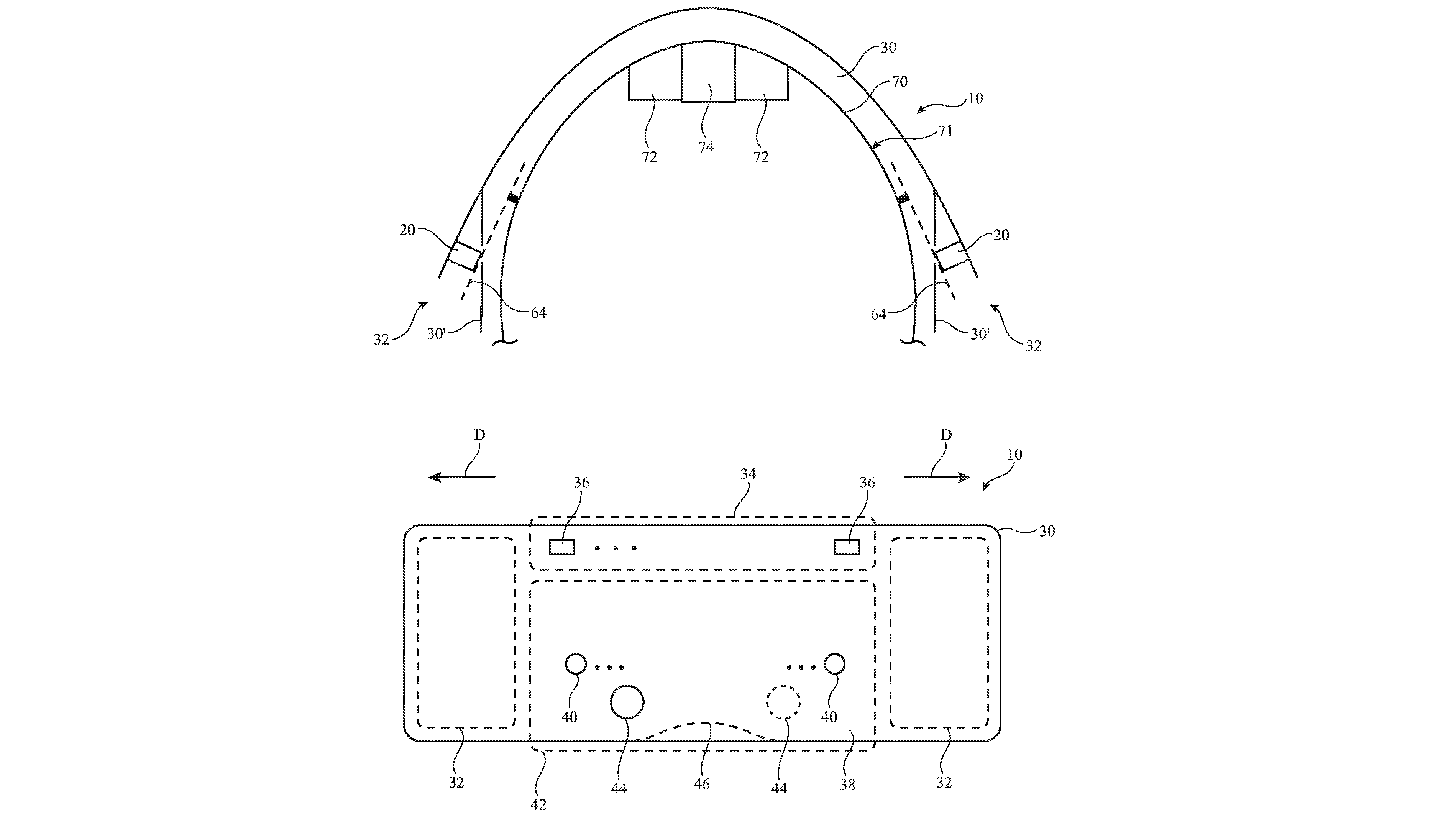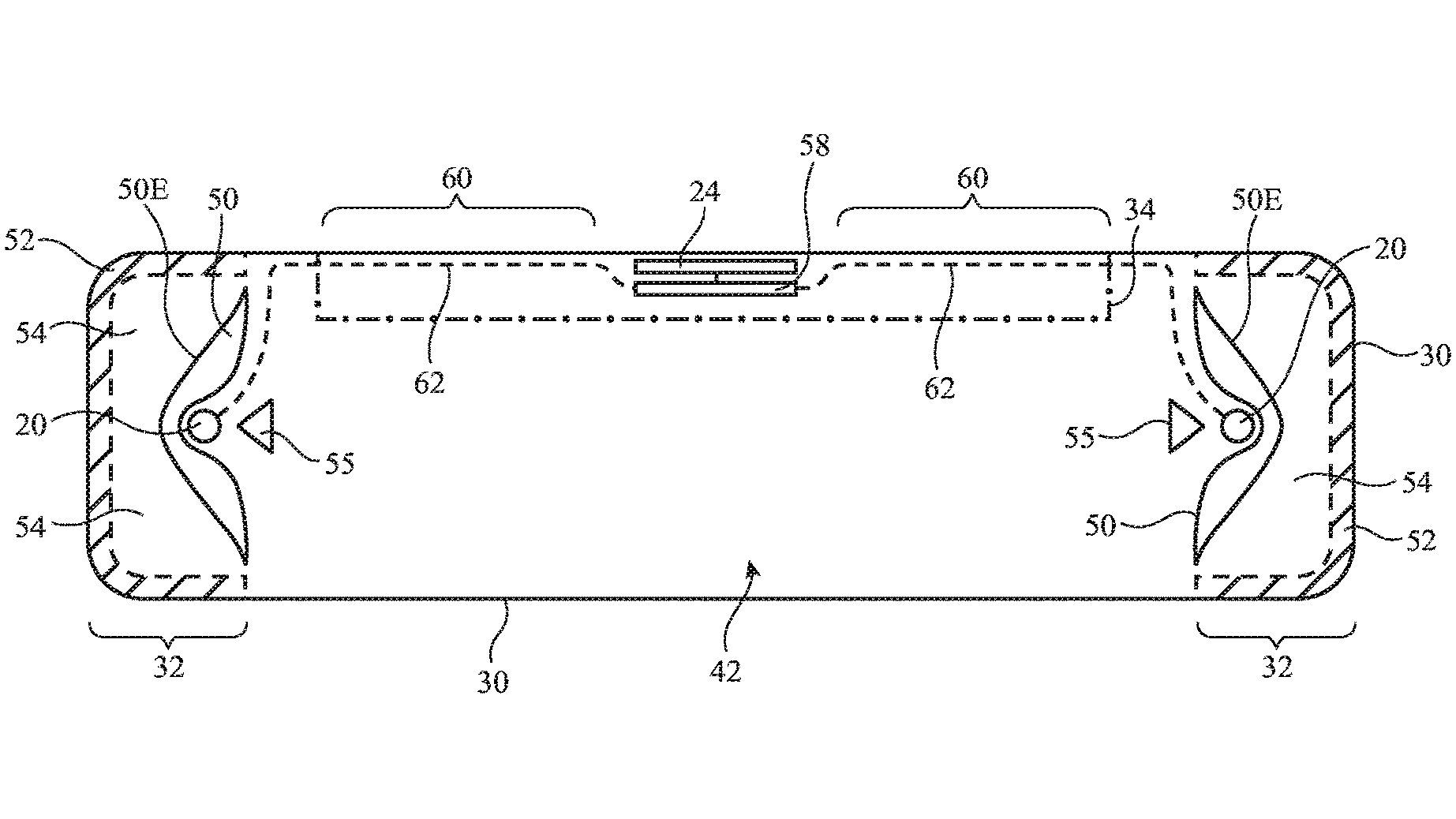An Apple smart eye mask would feature integrated speakers a la AirPods along with biometric sensors, including sensors to monitor your eye and brain activity.

- Apple has been granted a patent for an advanced sleep mask that would integrate many biometric sensors to monitor your eye, brain and other activity.
- The invention also promises to integrate AirPods functionality. With speakers in the fabric of the device, you’d be able to gently fall asleep to their favorite music.
- The device would feature fabric stretching across your face, covering your eyes, so that you could sleep or rest even when ambient lighting conditions are bright.
Who’s ready for an Apple smart sleep mask?
Work on the invention began in 2018, and now the United States Patent and Trademark Office (USPTO) has granted Apple a patent, titled “Wearable electronic device with speakers and sensors,” describing a sleep mask of sorts with AirPods and biometric sensors integrated into the fabric of the device, including sensors to monitor eye and brain activity. The device would gather your biometric data while you’re asleep, displaying various statistics and trends later on a host device.
The patent description available on the USPTO website posits a problem of wearing headphones or even earbuds such as AirPods while trying to fall asleep.
“Headphones may be worn by people who desire to listen to audio content,” Apple writes. “Headphones may not, however, be sufficiently comfortable for napping or wearing for long periods of time.” Thus, Apple proposes a solution in form of an all-new device family which—as PatentlyApple writes—would be “primarily formed with a soft fabric that sits over the user’s eye and nose area.”

There would be ear openings with trigs openings on the ends. “A soft central portion of the fabric between the ends may overlap the user’s eyes,” says Apple. “Light sources may be placed within the central portion to provide illumination for the user’s eyes.”
The wearable electronic device may have control circuitry that receives power from a power source. Sensors may be used to gather sensor information such as biometric sensor information. The sensors, control circuitry, and power source may be mounted in a stiff edge portion of the fabric. The stiff edge portion of the fabric may have an elongated strip shape and may extend along an upper edge of the central and the electronic device. Stiffener structures sandwiched between inner and outer layers of the fabric may be used to support speakers.
Aside from speakers, the patent abstract mentions putting bone conduction transducers in the ear portions to provide audio.
But would Apple ever build a sleep mask?
Apple often files for patents that it never uses in any of its products as part of a defensive strategy. Should the company choose to develop, build and sell a smart eye mask of sorts, it could market it as a new product in the AirPods family or an entirely new type of accessory designed to promote wellbeing, relaxation and sleep.
We don’t think branding this device as an “AirPods Eye Mask” or some such would make any sense. But as a well-being product, it would perfectly fit in Apple’s current health-related efforts that revolve around the Apple Watch, custom biometric sensors and accompanying software. Not only that but could such a thing somehow tie into Apple’s 2017 acquisition of the sleep-tracking startup Beddit?
Only time will tell. Until this patent spawns an Apple smart eye mask, we can at least imagine a gadget that would help us not only fall asleep but improve our general wellbeing. Read: How to set up and use Face ID while wearing a mask